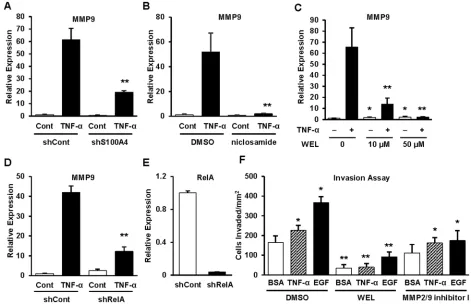S100A4 drives non-small cell lung cancer invasion, associates with poor prognosis, and is effectively targeted by the FDA- approved anti-helminthic agent niclosamide
Full text
Figure




Related documents
Importantly, LPS induced increases in MIP-2 expression (Figure 6b), total cell number (Figure 6c), MPO activity (Figure 6d) and total protein (Figure 6e) in BAL fluid were all
about the usefulness of hand hygiene compliance in patient care (score range: 1=extremely low, 7=extremely high). 4) Controlling factors: This category had six questions to
The analysis of the lncRNA expression profiles in both LUAD tissues and normal lung tissues identified a total of 346 differentially expressed lncRNAs, which were used for
Jakarta Post 18 -X-93 Although the Timorese resistance has switched to a strategy of focusing more on clandestine work in urban areas (to which the Indonesian
Purpose: To evaluate if the standard anesthetic regimen – topical combined with intracameral anesthesia without sedation – in a population-based cohort of unselected cataract
more associated with a later draft position in these rounds; suggesting that as the talent selection pool 260. grows smaller, AFL recruiters change the type of player they

